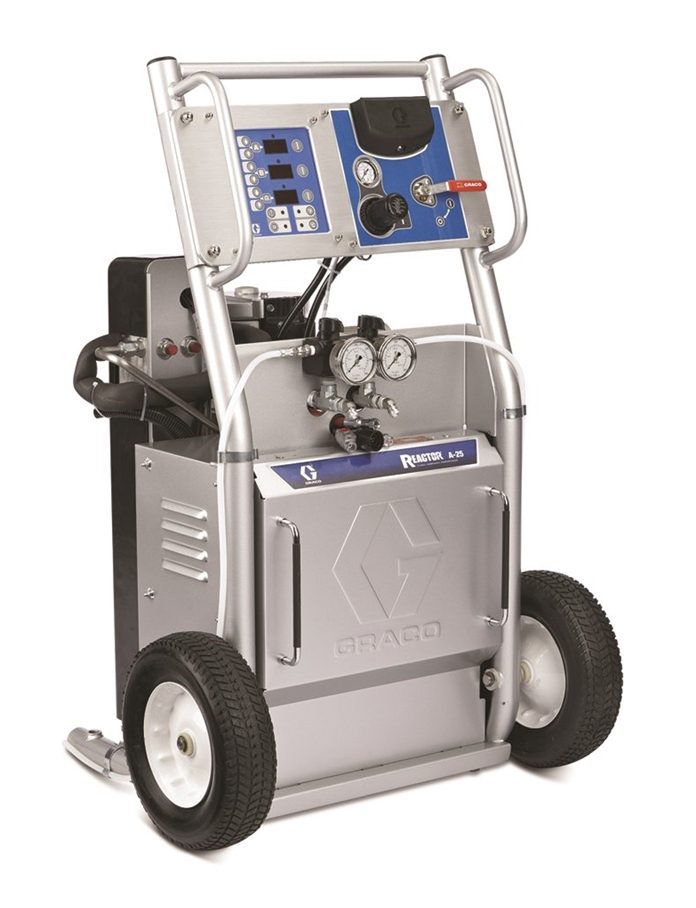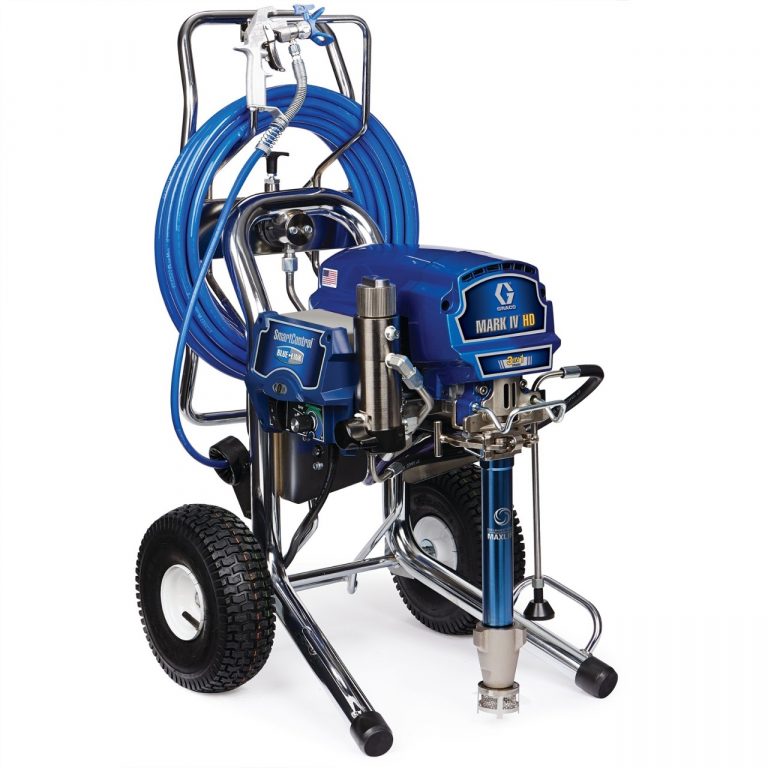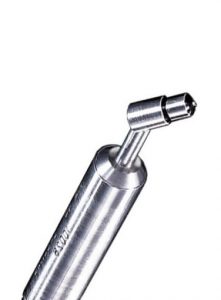There are three types of spray foam machines from which to choose – electric, pneumatic, and hydraulic. Choosing the right technology depends on your spray foam needs and how you plan to use your equipment. By learning how air-driven, or pneumatic, spray foam machines work, you’ll be able to understand what to consider before buying one.
Two-component pneumatic technology has been used since the 1960s. However, improvements in air motor, heater, hose and pump technology over the past 50 years have updated this technology.
Simplicity Of Air-Driven Systems
Pneumatic spray foam systems employ the simplest two-component pumping technology: A single air motor driving two pumps. The air motor and pumps are sized appropriately to provide the necessary fluid pressure, and this sizing is referred to as “pressure ratio.”
For example, if a pneumatic system has a pressure ratio of 25:1, that means that for every 1 pound per square inch (psi) of air pressure, the pump will deliver 25 psi of fluid pressure. So, if the air pressure to the air motor is 50 psi, the fluid pressure will be 1,250 psi (50 x 25 = 1,250).
The pneumatic spray foam machine maintains consistent pressure when the applicator trigger is pulled (dynamic pressure), and when it is not pulled (stall pressure), as long as the supplied air pressure for the system is sufficient and the supply hose is large enough in diameter.
Air-driven spray foam machine
Trade-Offs Of Pneumatic Technology
Pressure Monitoring
Pneumatic technology has been around for decades and is very reliable. However, because pneumatic spray foam systems do not include pressure-monitoring technology found in electric or hydraulic systems, the operator must be observant while applying the foam or coating, watching for changes that could indicate an off-ratio condition.
Heating The Chemicals
The foam and polyurea chemicals used with spray foam systems must be heated to a range of 110˚ F to 180˚ F. These spray foam systems typically have large electric primary heaters to heat the chemicals to the desired temperature set point.
In theory, the hoses could simply be insulated to maintain chemical temperature set points, but insulation alone isn’t enough when a contractor starts up in the morning or during an extended shutdown during the day. Heated hoses raise the chemical temperatures in the hose to operating levels at start up and maintain the temperature set point throughout the day.
While maintaining the temperature of the chemicals is vital, heated hoses should not be used as to boost chemical temperatures above the temperature set point of the primary heaters. In addition, electrical power in 200-240 or 350-415 voltage is required for the proportioning pump, primary heaters and heated hose. Compressed air also is required for the applicator.
Is A Pneumatic Spray Foam Machine Right For You?
Due to the range of pneumatic spray foam systems available today, buyers should take the time to understand how each works, as well as the pros and cons. Besides pneumatic, there are also hydraulic and electric spray foam machines, each with their own characteristics.
Heating spray foam chemicals


